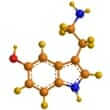Background
- Horsetail (Equisetum arvense) has traditionally been used in Europe as a diuretic for the treatment of edema (swelling/fluid retention). The German Commission E expert panel has approved horsetail for this indication. Horsetail is also occasionally used for osteoporosis, nephrolithiasis (kidney stones), urinary tract inflammation, and wound healing (topical). It is also used in cosmetics and shampoos. These uses have largely been based on anecdote and clinical tradition, rather than scientific evidence.
- There is preliminary human evidence supporting the use of horsetail as a diuretic. One poorly designed human trial found horsetail to effectively raise bone density equally to calcium supplements.
- In theory (based on mechanism of action), horsetail ingestion in large amounts may cause thiamine deficiency, hypokalemia (low potassium), or nicotine toxicity. Reported adverse effects include dermatitis.
References
Natural Standard developed the above evidence-based information based on a thorough systematic review of the available scientific articles. For comprehensive information about alternative and complementary therapies on the professional level, go to . Selected references are listed below.
- Corletto F. [Female climacteric osteoporosis therapy with titrated horsetail (Equisetum arvense) extract plus calcium (osteosil calcium): randomized double blind study]. Miner Ortoped Traumatol 1999;50:201-206.
- Dos Santos JG Jr, Blanco MM, Do Monte FH, et al. Sedative and anticonvulsant effects of hydroalcoholic extract of Equisetum arvense. Fitoterapia 2005 Sep;76(6):508-13.
View Abstract - Fabre B, Geay B, Beaufils P. Thiaminase activity in Equisetum arvense and its extracts. Plant Med Phytother 1993;26:190-197.
- Gibelli C. The hemostatic action of Equisetum. Arch Intern Pharmacodynam 1931;41:419-429.
- Graefe EU, Veit M. Urinary metabolites of flavonoids and hydroxycinnamic acids in humans after application of a crude extract from Equisetum arvense. Phytomedicine 1999;6(4):239-246.
View Abstract - Henderson JA, Evans EV, McIntosh RA. The antithiamine action of Equisetum. J Amer Vet Med Assoc 1952;120:375-378.
- Joksic G, Stankovic M, Novak A. Antibacterial medicinal plants Equiseti herba and Ononidis radix modulate micronucleus formation in human lymphocytes in vitro. J Environ Pathol Toxicol Oncol 2003;22(1):41-48.
View Abstract - Katikova OI, Kostin I, Tishkin VS. [Hepatoprotective effect of plant preparations]. Eksp Klin Farmakol 2002;65(1):41-43.
View Abstract - Maeda H, Miyamoto K, Sano T. Occurrence of dermatitis in rats fed a cholesterol diet containing field horsetail (Equisetum arvense L.). J Nutr Sci Vitaminol (Tokyo) 1997;43(5):553-563.
View Abstract - Nitta A, Yoshida S, Tagaeto T. A comparative study of crude drugs in Southeast Asia. X. Crude drugs derived from Equisetum species. Chem Pharm Bull (Tokyo) 1977;25(5):1135-1139.
View Abstract - Oh H, Kim DH, Cho JH, et al. Hepatoprotective and free radical scavenging activities of phenolic petrosins and flavonoids isolated from Equisetum arvense. J Ethnopharmacol 2004;95(2-3):421-424.
View Abstract - Perez Gutierrez RM, Laguna GY, Walkowski A. Diuretic activity of Mexican equisetum. J Ethnopharmacol 1985;14(2-3):269-272.
View Abstract - Revilla MC, Andrade-Cetto A, Islas S, et al. Hypoglycemic effect of Equisetum myriochaetum aerial parts on type 2 diabetic patients. J Ethnopharmacol 2002;81(1):117-120.
View Abstract - Sudan BJ. Seborrhoeic dermatitis induced by nicotine of horsetails (Equisetum arvense L.). Contact Dermatitis 1985;13(3):201-202.
View Abstract - Tiktinskii OL, Bablumian IA. [Therapeutic action of Java tea and field horsetail in uric acid diathesis]. Urol Nefrol (Mosk) 1983;3(1):47-50.
View Abstract







